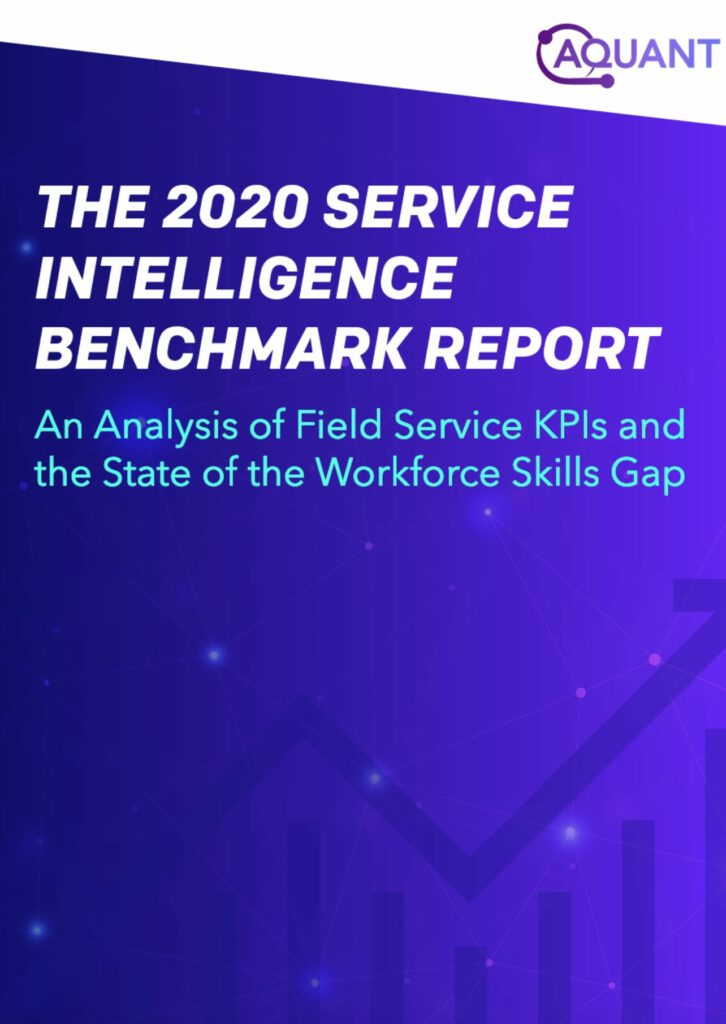Why Service Leaders Need To Think About Standard KPIs In New Ways
In a new series of excerpts from a recent white paper published by Aquant we uncover how field service organisations and their workforce (really) measure up, and provide an analysis of how to use hidden KPI data to cut service costs and improve delivery…
AQUANT BENCHMARK REPORT
What’s the cost of not fully understanding your service organization’s performance?
With this question in mind, Aquant’s data sleuths analyzed service records from more than 50 leading organizations, looking at the data with an eye towards how to improve service delivery.
Our team crunched the numbers and mapped out how the skill level of the workforce on an individual and organizational level impacts service delivery.
Here’s what we analyzed:
- A snapshot of the industry overall and how companies measure up against each other
- The skill level of the workforce on an individual level
- The skills gap that exists between the highest and lowest performers within each organization
Why Service Leaders Need To Think About Standards KPIs In New Ways:
The industry is currently navigating multiple challenges including:
- A retirement wave
- Challenges recruiting experienced workers
- Changes in customer demands, requiring new skillsets among the workforce
- Pandemic-driven need to limit time spent on job site
This shift has left service leaders struggling to upskill junior employees and erase the knowledge gap that exists between the highest-performing 25% of the workforce, and everyone else.
The insights in this report, gleaned from actual service data, sheds light on the most effective methods to upskill a workforce in a way that leads to rapid ROI while simultaneously increasing employee engagement and confidence.
If organizations can successfully uplevel the team, you’ll benefit from everything from lower customer churn to the ability to execute on more profitable service contract models, including outcome-based and predictive service contracts.
Key Findings:
The Knowledge Gap is Expensive
The bottom quarter of the workforce costs organizations 80% more than the top quarter
Misunderstanding KPIs is Costly
The cost to completely and accurately resolve a service issue is more than 30% higher than simply measuring Cost Per Work Order. Why the discrepancy? Because there are often multiple work orders involved to successfully fix the root cause of the problem.
- Average Cost per Success: $2,085.61
- Average Cost per Work Order: $1,553.69
The Opportunity
Service organizations whose workforces had a smaller discrepancy between Heroes and Challengers (a low skills gap) demonstrate higher performance overall versus those with a high skills gap
Small workforce improvements add up to big ROI. Here’s why:
Boosting the bottom 25% of the workforce (challengers) up modestly to the level of your average performers (contenders), will result in a nearly 17% savings in service costsAdditionally, helping boost your contenders up closer to your top performers (service heroes) will increase ROI by another 17%
If everyone had the knowledge and skills to perform like the top 25% of the workforce, organizations would save 38% of service costs.
Look out for the next feature in this series coming next week where we explore three more key technologies required for remote service delivery.
This white paper is currently available exclusively to all FSN PRO members. Subscribe today to have instant access our industry-leading library with over 130 resources, 70+ hours of in-depth conversation and our FSN Education Masterclass courses.

![]() Data usage note: By accessing this content you consent to the contact details submitted when you registered as a subscriber to fieldservicenews.com to be shared with the listed sponsor of this premium content Aquant who may contact you for legitimate business reasons to discuss the content of this white paper.
Data usage note: By accessing this content you consent to the contact details submitted when you registered as a subscriber to fieldservicenews.com to be shared with the listed sponsor of this premium content Aquant who may contact you for legitimate business reasons to discuss the content of this white paper.


